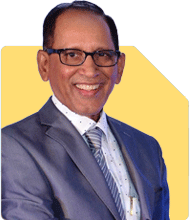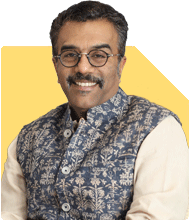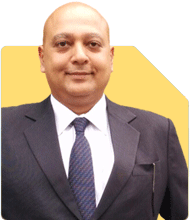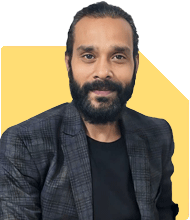Hello, I am married with 7 years old kid. My spouse in home maker. My monthly income is 1.06 lakh. I have a home loan of 16 lakhs taken in 2018 for 20 years. My home loan emi is 14k monthly. Right now it is around 8 lakhs in balance. I have a SIP of 6k in tax savings mutual funds which i started 2 months back and having a investment of 1 lakh in equity. Around 2 lakhs in gold. I want to be loan free in next 3 to 4 years. Currently, I have no personal loan. I have credit card monthly expenses which are around 20-30k. I have medical insurance cover for 10 lakhs with 13k in yearly premium. Medical insurance cover of 5 lakhs from office. I want to start investing for my child's higher education. Also, I would like to save for emergency fund. What should be the best way to be financially sound?
Ans: You are managing your income and responsibilities quite well. You have a stable monthly income of Rs. 1.06 lakh, a manageable home loan EMI, and initial investments in mutual funds, gold, and equity. Your awareness about child education and emergency fund shows your financial maturity.
Let us now assess your finances from all angles and design a 360-degree path to become loan-free, while saving for your child’s future and building financial safety.
Income and Loan Overview
You earn Rs. 1.06 lakh monthly.
You have a home loan with EMI of Rs. 14,000.
Balance on loan is around Rs. 8 lakhs.
You have no personal loan, which is very good.
Credit card spends are Rs. 20,000 to Rs. 30,000 monthly.
This shows that your fixed EMI burden is around 13% of income. That is comfortable. However, credit card usage of 30% of income can be risky if not cleared fully.
Current Investments Snapshot
SIP in tax-saving mutual fund: Rs. 6,000 (started 2 months ago)
Equity investments: Rs. 1 lakh
Gold holdings: Rs. 2 lakhs
Your current financial assets total around Rs. 3 lakhs. This is a starting point. You need to build much more.
Insurance Protection and Risk Coverage
You have Rs. 10 lakhs medical insurance personally.
You also have Rs. 5 lakhs cover from office.
This is good coverage. But do check if the policy covers family too. If not, consider adding family floater cover for spouse and child. Also, check if your term life cover is in place.
If you don’t have a term plan, take one with 15 to 20 times your annual income.
Emergency Fund Planning
This is your financial safety net. It protects you during job loss, illness or big bills.
You should build at least Rs. 3 to 4 lakhs as emergency fund.
This is around 3 to 4 months of expenses.
Keep it in savings account, liquid fund or sweep-in FD.
Do not invest emergency fund in equity or gold.
You can build it step by step. Allocate Rs. 10,000 monthly towards this till you reach the target.
Credit Card Management
Spending Rs. 20,000 to Rs. 30,000 monthly is fine only if it is paid in full.
Do not carry forward dues. Interest is very high.
Try to reduce monthly card spends to Rs. 15,000 or less.
Use UPI or debit card to control impulse buys.
If you get cashback or points, track their usage.
Do not use credit card for investment or gold buying.
Home Loan Prepayment Goal
You want to close your home loan in 3 to 4 years. That is a good decision.
Loan balance is around Rs. 8 lakhs.
Your EMI is Rs. 14,000 per month.
You may add part-payments from bonuses or savings.
Even extra Rs. 10,000 monthly can reduce loan duration.
Focus on part-paying principal directly. Inform your bank to reduce tenure, not EMI.
If you finish loan early, you free up Rs. 14,000 monthly.
This can go into long-term investments after loan is over.
Try to avoid any new loans while you are prepaying this one.
Investing for Child’s Higher Education
Your child is 7 years old. You have 10 to 11 years to save.
Education cost after 10 years may be Rs. 20 to 40 lakhs.
Start dedicated SIPs for this goal separately.
Don’t mix it with emergency or retirement goal.
Invest in diversified mutual funds through a Certified Financial Planner. Avoid direct funds. You will miss guidance, reviews, and rebalancing support.
Regular funds through a planner offer:
Goal tracking
Portfolio correction
Behavioural support
Scheme curation based on age and need
DIY investing often lacks structure. That hurts goal achievement.
Why Not Index Funds for Child’s Goal
Index funds copy stock index. No human helps the fund. That can work poorly in volatile times.
No protection during market fall.
No smart fund manager to switch between sectors.
Index funds only follow, they do not lead.
In bear market, they do not stop losses.
Actively managed funds have better control and insights. Use them through a planner.
Build a Structured Financial Plan
Now let’s allocate your monthly income in a smart way:
Home loan EMI: Rs. 14,000
Credit card spends: Rs. 20,000 (reduce this to Rs. 15,000 soon)
SIP (Tax-saving): Rs. 6,000
Emergency fund savings: Rs. 10,000 (for next 6-7 months)
Child education SIP: Rs. 8,000 (to be increased later)
Part-payment towards loan: Rs. 10,000 monthly (target 3 years)
Term insurance premium: Around Rs. 1,000 (if not yet taken)
Household and utility expenses: Rs. 25,000 to Rs. 30,000
Balance: Keep for buffer and minor savings
This is an ideal approach. Review once in 6 months with a Certified Financial Planner.
Gold and Equity Holding Strategy
Your Rs. 2 lakhs in gold can be kept as family emergency backup.
Do not sell unless there is a big medical or job emergency.
Your Rs. 1 lakh in equity should stay invested for 5+ years.
Do not redeem for short-term use.
Equity needs time to grow. If you need this money in next 2 years, move it to safer option.
Future Financial Milestones You Must Plan
Complete home loan closure in 3 to 4 years
Build full emergency fund in 1 year
Have Rs. 15 lakhs saved for child education in 7 to 8 years
Have Rs. 25 to 30 lakhs for retirement by age 50
Have term insurance and medical cover active always
Reduce credit card dependency by 50%
Once home loan is closed, increase SIPs aggressively.
Why Work With Certified Financial Planner
You need a complete, goal-based plan. A planner helps with:
Asset allocation based on your age and income
Retirement, education and risk planning
Scheme selection and regular monitoring
Avoiding common investor mistakes
Tax planning and withdrawal strategies
Trying to do everything alone may look cheap, but it costs more later.
Final Insights
You have strong income and manageable EMI
Credit card spend needs better control
Home loan closure in 3 to 4 years is possible
Emergency fund should be your next priority
Child education goal must have own SIP
Don’t rely on gold or equity for short-term goals
Mutual funds should be through certified planner, not direct mode
Avoid index funds due to lack of active management
Life and health cover are in place, continue renewing
Review your plan every year with a qualified planner
After loan closure, build retirement and wealth portfolio aggressively
Taking small steps now gives strong results later.
Best Regards,
K. Ramalingam, MBA, CFP,
Chief Financial Planner,
www.holisticinvestment.in
https://www.youtube.com/@HolisticInvestment


























